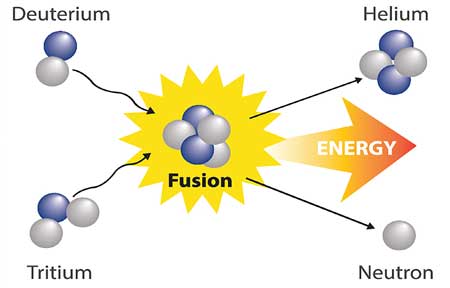 Fusion power is the Holy Grail of the energy industry. With just a few grams of exotic substances, it is possible to produce enough energy for one person for 60 years.
Fusion power is the Holy Grail of the energy industry. With just a few grams of exotic substances, it is possible to produce enough energy for one person for 60 years.
At least, theoretically. Fusion is what makes the sun the sun. When harnessed, it can create power virtually forever as the atomic nuclei combine to form a heavier nucleus repeatedly, releasing energy in the process.
It sounds easier than it is. Engineers and scientists have been trying to reach critical mass since the 1930s. The prize? Virtually limitless, clean, safe and affordable energy without all the negatives of nuclear fission, which is the current technology in use. A relatively small fusion reactor can produce four times the energy of a nuclear power plant and four million times more energy than oil and coal.
And who’s leading the way in harnessing this elusive endless power source? Look no further than Everett, Washington. There, two startups, Helion Energy and Zap Energy, are leveraging Substitute House Bill 1942 to crack this tough nut and finally bring the promise of nuclear fusion to the world.
At Helion Energy, a test platform is underway that, if the science is right, will serve as a demonstrator, producing electricity from fusion. More than 300 employees are working on the world’s first fusion power plant to go online by 2028 in Chelan County.
“When you have something that can change the world, that’s worth taking the risk,” Governor Inslee declared to a room full of reporters at Everett’s Helion Energy during a recent visit. “This is a very Washington project because it’s based on ambition and incredible technological talent – that’s what we do here in Washington State.”
One of the biggest hurdles remaining is archaic policy. Anything with the word “nuclear” in it gets an eye roll and a mention of Chornobyl. The world has come a long way since those early days and nuclear fusion, not fission, is the path forward. Most legacy policies and legislation don’t make the important distinction between the two, slowing progress.
Fusion and fission couldn’t be more different. Fusion energy doesn’t emit any more radiation than a community hospital and efforts are being made at the federal level to categorize fission production in the same category as hospitals.
Founded in 2013, Helion is the first company in the world to build a fusion power plant. Microsoft is so confident that Helion will be successful that they have lined up to be one of the company’s first customers. The firm’s long-term goal is to build smaller, more efficient power plants to make this virtually inexhaustible energy more efficient, affordable and accessible.
Zap Energy is also in the hunt, focused on building compact, scalable fusion energy that confines and compresses the plasma without the need for complex magnetic coils. Their FuZE demonstrator can produce fusion plasmas hotter than the center of the sun, says Zap Vice President of R&D, Ben Levitt. The continual heating and compressing cycles can generate 10 million times more energy per ounce than burning the same amount of fossil fuel.